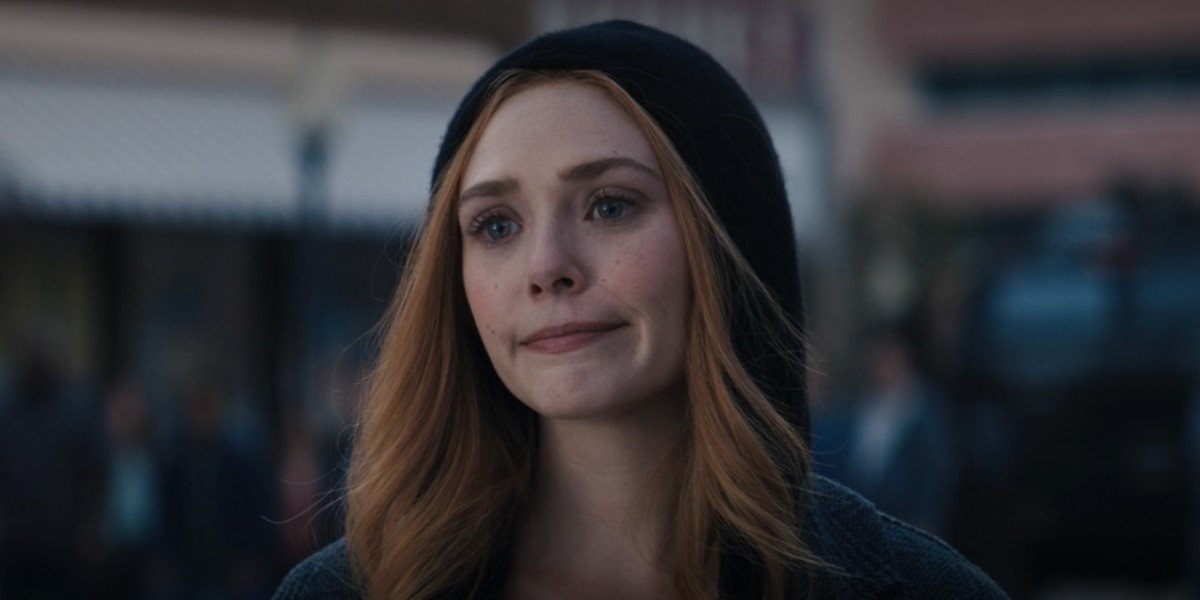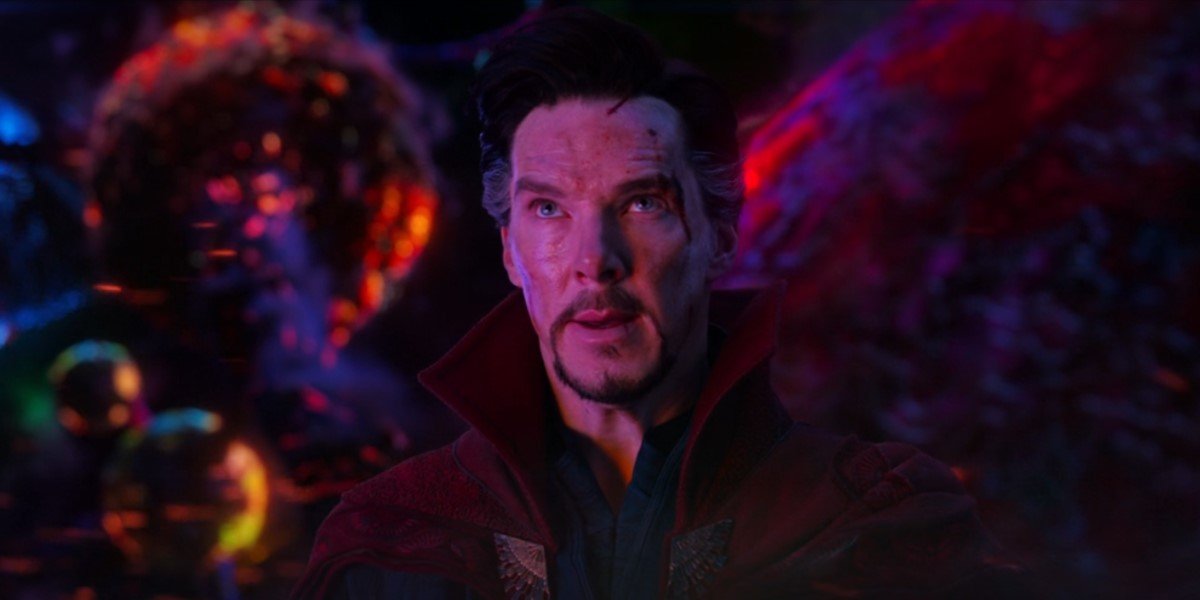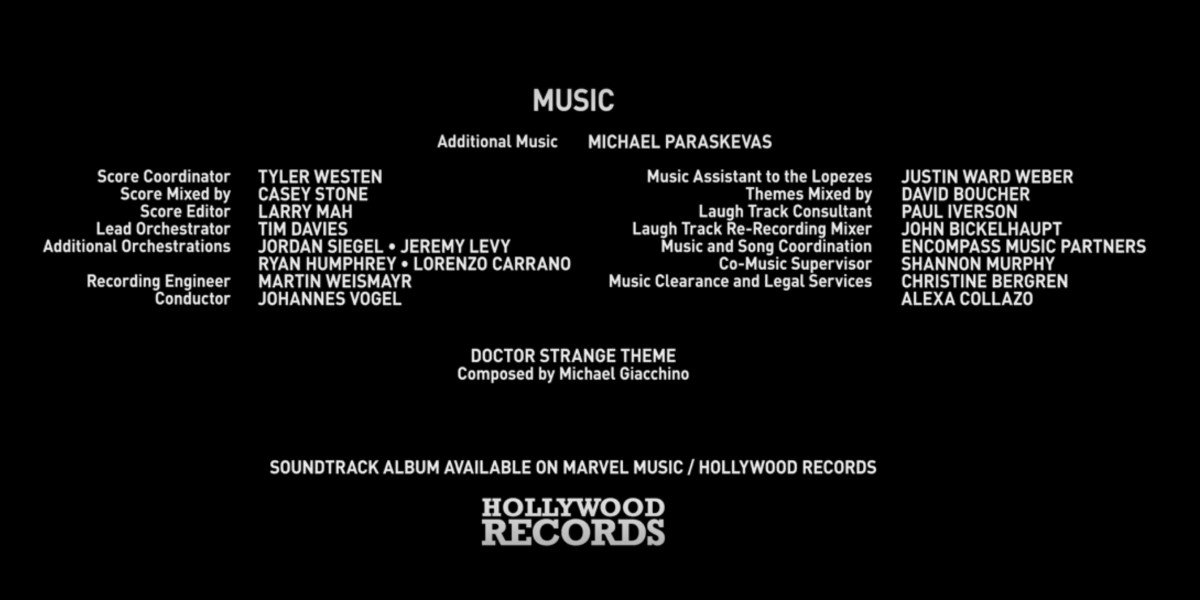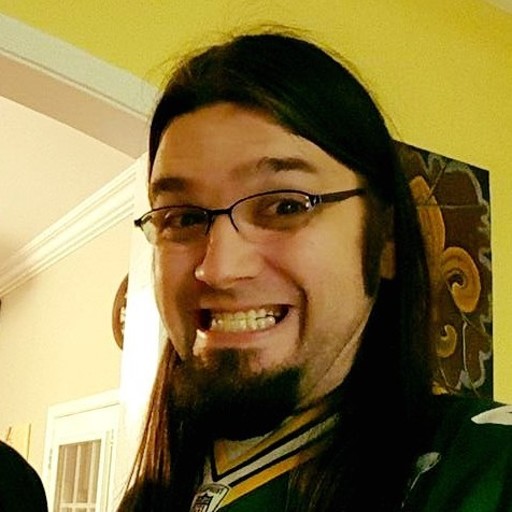Is WandaVision's Altered Post-Credits Scene On Disney+ A Doctor Strange Reference Or Just A Glitch?

Chances are, Loki's arrival on Disney+ had most Marvel fans thinking there weren't any pertinent reasons to go back and re-watch WandaVision with the intention of finding something that wasn't there upon the drama's original release. Such assumptions are apparently as useful as Mephisto theories, it seems, as one eagle-eyed viewer realized WandaVision's series finale featured a couple of altered details during the Sam Raimi-esque post-credits sequence. The changes were pretty minimal, to be sure, but the bizarreness of their existence has led us down the all too familiar path of What Does It All Mean?
Below, we'll take a look at what changed, thanks to the Reddit user who seemingly first noticed anything was different, and then talk out what might be happening here. And be sure to chime in on the poll below to let us know if you think there's a time variant messing about.

How WandaVision's Post-Credits Scene Is Different
When WandaVision's credits give way to the show's mysterious final scene, viewers fly above a body of water and a bunch of trees before popping into Wanda's cabin. Only now, the original picturesque setting has been made to appear even more lush, with many more trees having been digitally added to the areas on each side of the cabin. Plus, the trees are much greener, with the lighter-shaded trees now only appear to the far left of the screen, as opposed to scattered all over .
The second and far more theory-stricken change, if you want to call it that, is that there's now a small-but-consistent silhouette that appears in the shot. (As circled above, although it probably needs to be seen to understand in full.) With the right mindset, the reflective distortion can appear to be in the shape of a cape, and many gung ho fans are taking the leap to guess that it's Benedict Cumberbatch's Doctor Strange making a timely astral visit to Wanda's cabin as she is in the midst of reading the Darkhold. But is that really what's happening with this low-key, low-res change?

Is WandaVision's Post-Credits Scene Tied To Doctor Strange?
If we go forth with the added context that WandaVision was indeed originally meant to feature a cameo from Benedict Cumberbatch's Doctor Strange - it was excised in order to keep the focus on Elizabeth Olsen's Wanda - and that Disney+'s first Marvel series is directly linked to the upcoming Doctor Strange in the Multiverse of Madness, then it's certainly not a strikingly radical idea that this newly discovered visual element was added to reflect the upcoming MCU film now that it's nearing the end of its production. Handling things in this fashion could be Marvel's way of having its connective-tissue cake while still refraining from pulling attention from Wanda.
However, it's admittedly far easier to argue against this being a call-ahead to Doctor Strange in the Multiverse of Madness. For one, this particular silhouette wouldn't have earned a second look had it suddenly appeared in just about any other WandaVision shot, since it looks like a typical camera glare or reflection. Two, it stays in the same section of the screen the entire time it's visible, which is also indicative of an issue with the camera or digital effects. (Although the static movement allows arguments that it's White Vision flying down to Wanda's cabin, given the Visions' stiff flight movement.) As not to exhaust these arguments, I'll end saying I cannot in good conscience believe Kevin Feige and/or whoever else was involved would have supported an "official" Doctor Strange cameo that could easily be mixed up with a dinky camera glitch.

But Wait, WandaVision's Credits Also Changed
Before the post-credits scene even arrived, however, Marvel also snuck another change into WandaVision's finale, this time during the actual credits. Though fans didn't get the huge reveal that Kathryn Hahn's Agatha was truly behind the entire series, we did get to see famed blockbuster composer Michael Giacchino's name appearing for the first time, as credited for having composed the theme for Doctor Strange. But what does THAT even mean?
Your Daily Blend of Entertainment News
On the one hand, those who believe the silhouette is a sure sign of Doctor Strange's presence can take this to be further proof that WandaVision's final moments were indeed changed up to reflect the Master of the Mystic Arts' arrival. On the other hand, it was already pretty clear upon first viewing (or hearing, as it were) that the MCU series' post-credits scene was set to a non-booming version of Michael Giacchino's Doctor Strange theme, so the fact that he wasn't initially credited seems more like a behind-the-scenes oversight rather than proof of multiversal tetherings. It's also worth noting, perhaps, that Giacchino isn't scoring Sam Raimi's sequel, with Danny Elfman taking over composing duties.
As someone who prefers crackpot theorizing over the drudgery of normal life, I'm all about diving into cahoots with the idea that WandaVision may get changed even more with clearer connections to Doctor Strange in the Multiverse of Madness the closer we get to its release. I'm also keen on thinking harder about how Loki's history-changing time variants could also be responsible for any new moments noticed in both WandaVision and The Falcon and the Winter Soldier. Regardless of what it all means, though, I think we can agree that "making trees greener" is one of the weirder retcons in Marvel's long history. All eight episodes of WandaVision, as well as each of the other MCU series, are available to stream on Disney+.
This poll is no longer available.

Nick is a Cajun Country native and an Assistant Managing Editor with a focus on TV and features. His humble origin story with CinemaBlend began all the way back in the pre-streaming era, circa 2009, as a freelancing DVD reviewer and TV recapper. Nick leapfrogged over to the small screen to cover more and more television news and interviews, eventually taking over the section for the current era and covering topics like Yellowstone, The Walking Dead and horror. Born in Louisiana and currently living in Texas — Who Dat Nation over America’s Team all day, all night — Nick spent several years in the hospitality industry, and also worked as a 911 operator. If you ever happened to hear his music or read his comics/short stories, you have his sympathy.
